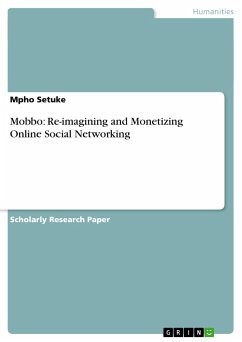Research Paper (undergraduate) from the year 2012 in the subject Sociology - Work, Profession, Education, Organisation, grade: None, International School of New Media at the University of Lübeck, language: English, abstract: The advent of online social networking has created opportunities for brands to attract large numbers of followers, while individuals can 'add' thousands of other members as personal friends. However, how users and brands share with, manage, and control communication to and from these large 'personal' networks has become a challenge. The challenge is exacerbated further by having separate massaging interfaces for communication channels like chat, inbox messaging, status update, etc, as it currently obtains in leading social networking services.In this paper, we present Mobbo1, a service that ranks and organizes people who share similar interests (eg fans of a brand, or a user's network of friends) into concise and manageable communities called mobbos, to enable targeted messaging and intuitive control of communication to and from other network members. Every activity in the network is thus associated with a community of interest, such that all messaging in the network takes place within these mobbos, and is targeted to only members of the mobbo. The mobbo approach unifies messaging interfaces into one, to improve interaction experience and centralize control and access.An algorithm to compute and rank a brand's or user's 'personal' network is also derived, while a method to organize the activity feed is presented.








